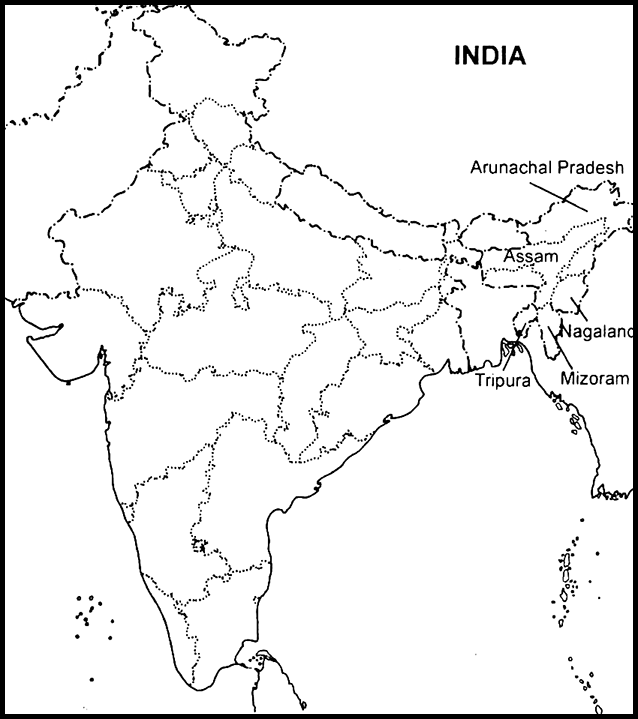
(i) Kashmir valley : It is heart of the region. The people are Kashmiri speaking and mostly Muslim with a small Kashmiri speaking Hindu minority.
(ii) Jammu : This region is a mix of foothills and plains, of Hindus, Muslims and Sikhs and speakers of various languages.
(iii) Ladakh : This region is mountainous. It has very little population which is equally divided between Buddhists and Muslims.
The internal divisions of the State of Jammu and Kashmir have led to multiple regional aspirations in the State as explained below :
(i) The Kashmiri people want a separate Kashmiri nation, independent of India and Pakistan. There are also groups that want Kashmir to merge with Pakistan. There is a third group which favours great autonomy for the people of the state within the Indian Union.
(ii) The regions of Jammu and Ladakhs are also in favour of autonomy but that is due to neglect and backwardness .Thus, there are divergent political aspirations in the State.
(b) Movements for greater autonomy -Assam
(c) Movements for separate national existence -Mizoram and Nagaland See map given below :
| A. Socio-religious identity leading to statehood | (i) Nagaland/Mizoram |
| B. Linguistic identity and tensions with Centre | (ii) Jharkhand/Chhattisgarh |
| C. Regional imbalance leading to demand for Statehood | (iii) Punjab |
| D. Secessionist demands on account of tribal identity | (iv) Tamil Nadu |
A. Socio-religious identity leading to statehood | (i) Punjab |
B. Linguistic identity and tensions with Centre | (ii) Tamil Nadu |
C. Regional imbalance leading to demand for Statehood | (iii) Jharkhand/Chhattisgarh |
D. Secessionist demands on account of tribal identity | (iv) Nagaland/Mizoram |
(i) Chandigarh would be transferred to Punjab.
(ii) A separate commission would be appointed to resolve the border dispute between Punjab and Haryana.
(iii) A tribunal would be set up to decide the sharing of Ravi-Beas river water among Punjab, Haryana and Rajasthan.
(iv) Compensation would be provided to and better treatment of those affected by the militancy in Punjab.
(v) It was also agreed that the application of Armed Forces Special Powers Act in Punjab would be withdrawn.
The provisions of the Punjab Accord can be the basis for further tensions between the Punjab and the neighboring States of Haryana and Rajasthan because the main disputes regarding Chandigarh and Ravi-Beas water were not decided by the accord. These were deferred and were to be decided by the commission or tribunal to be appointment later. That is why the question of Chandigarh has yet not been decided.
